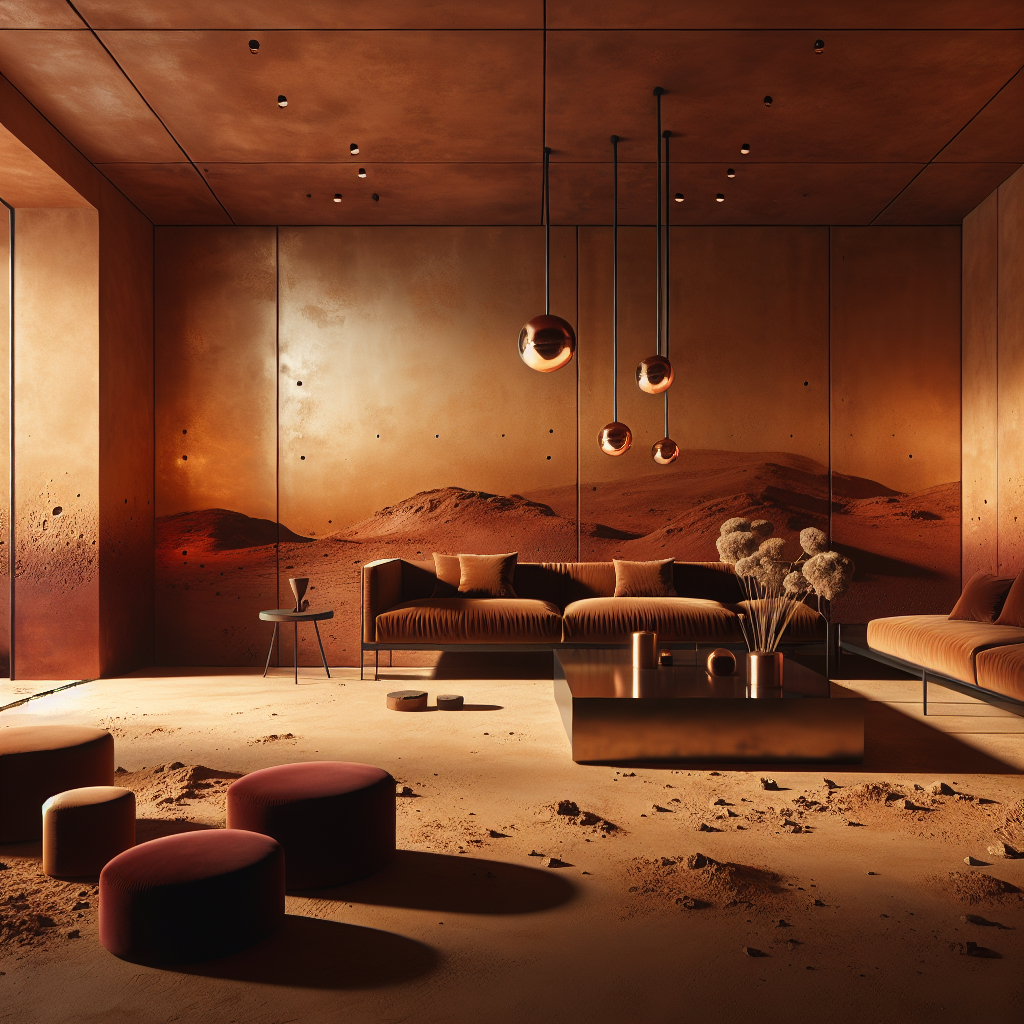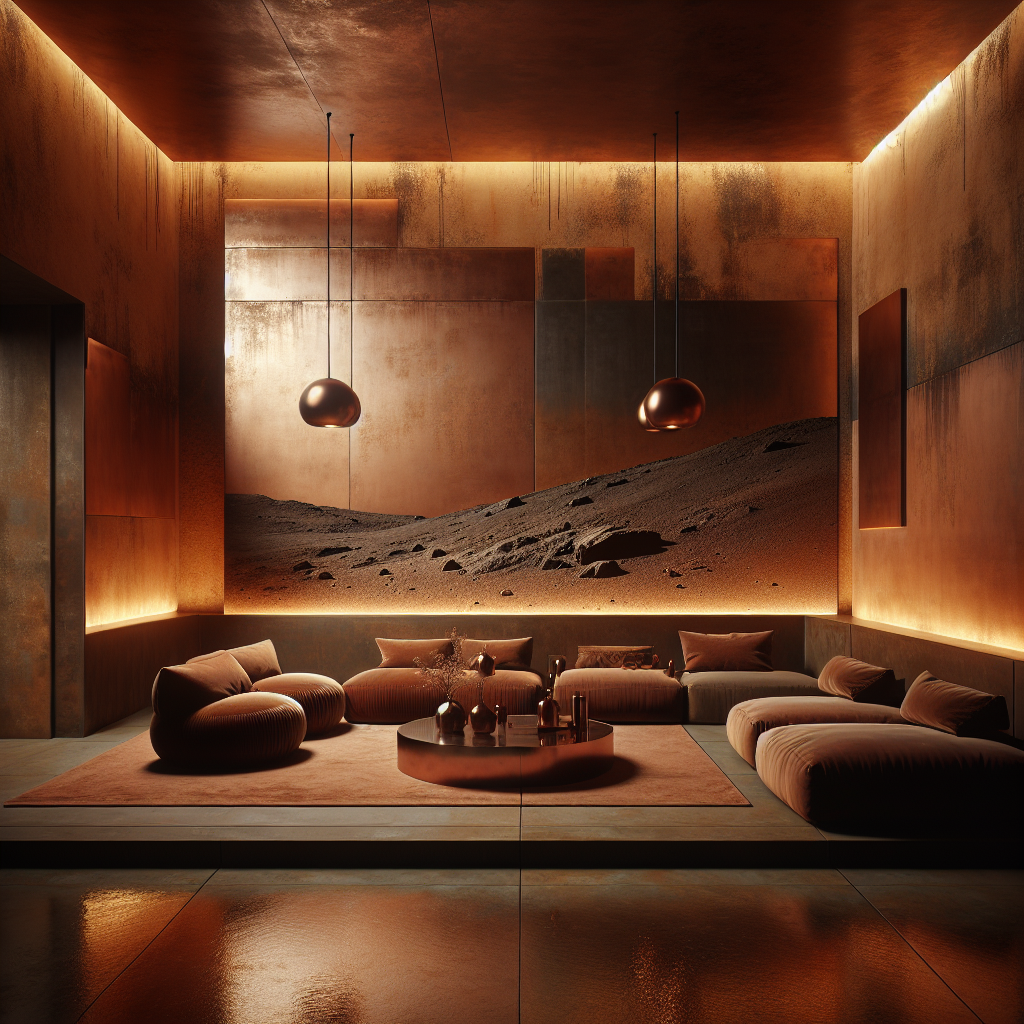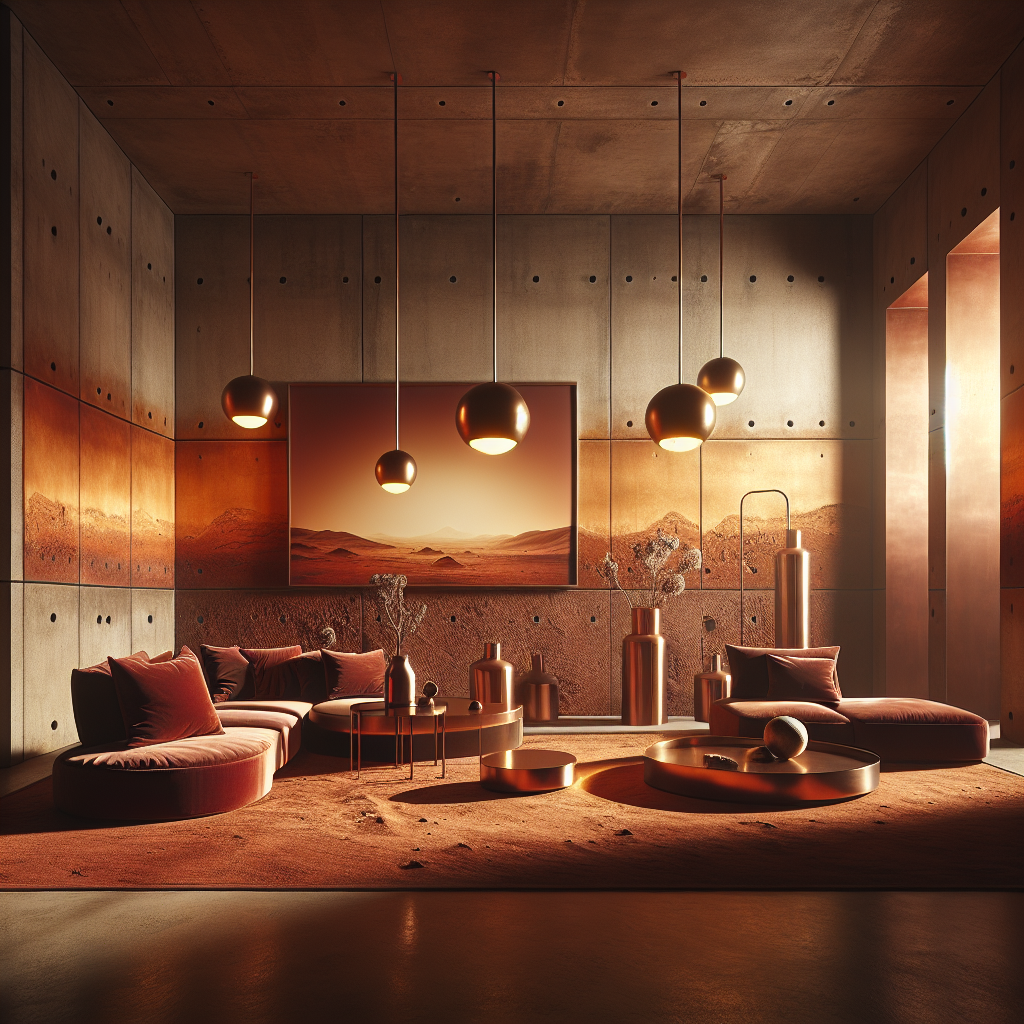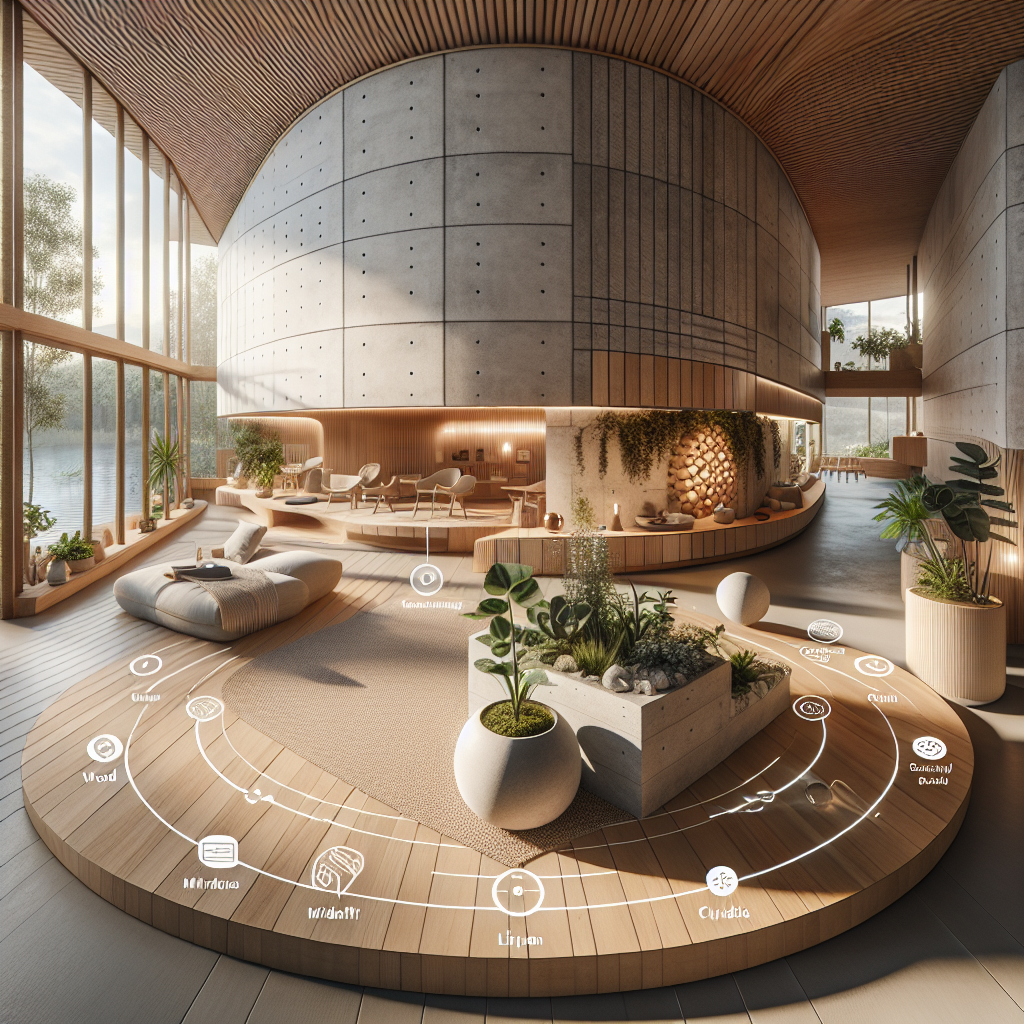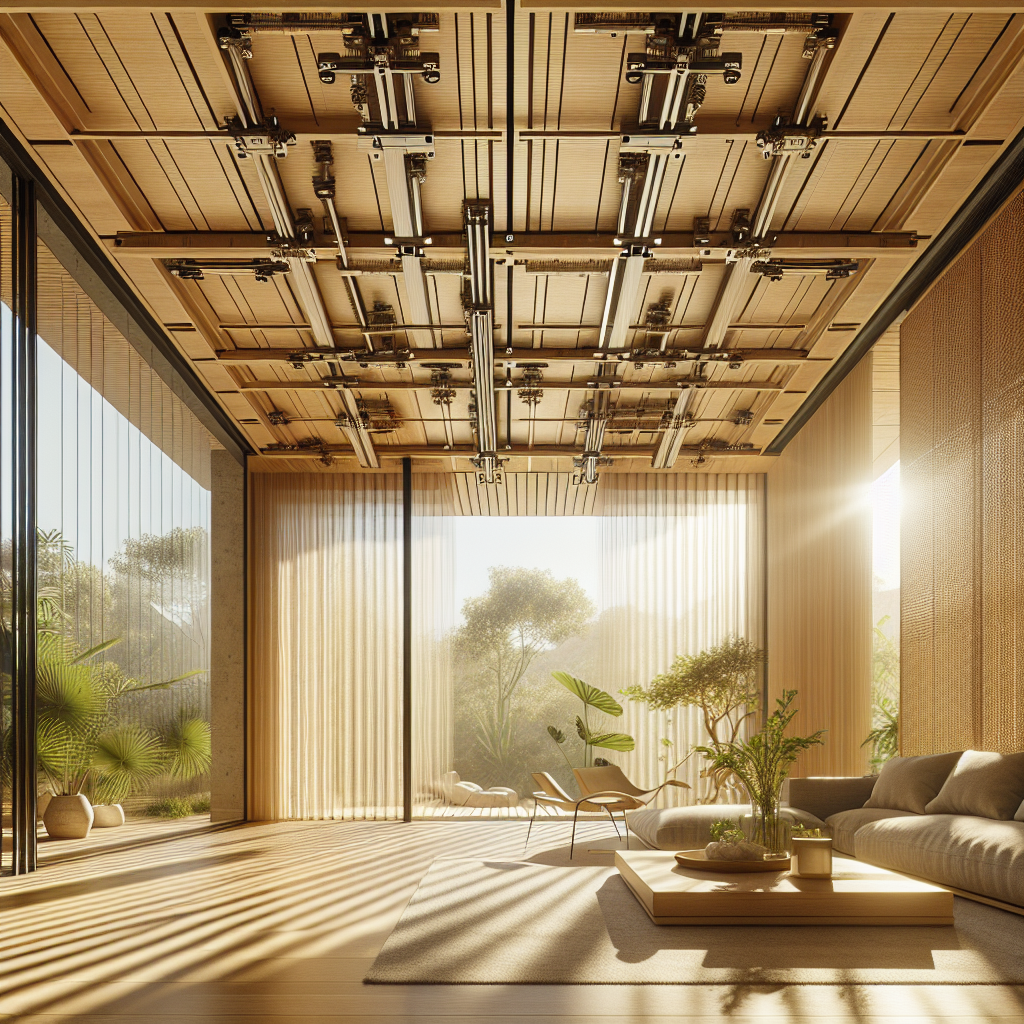A splash of: Mars red-hued interiors inspired by extraterrestrial landscapes
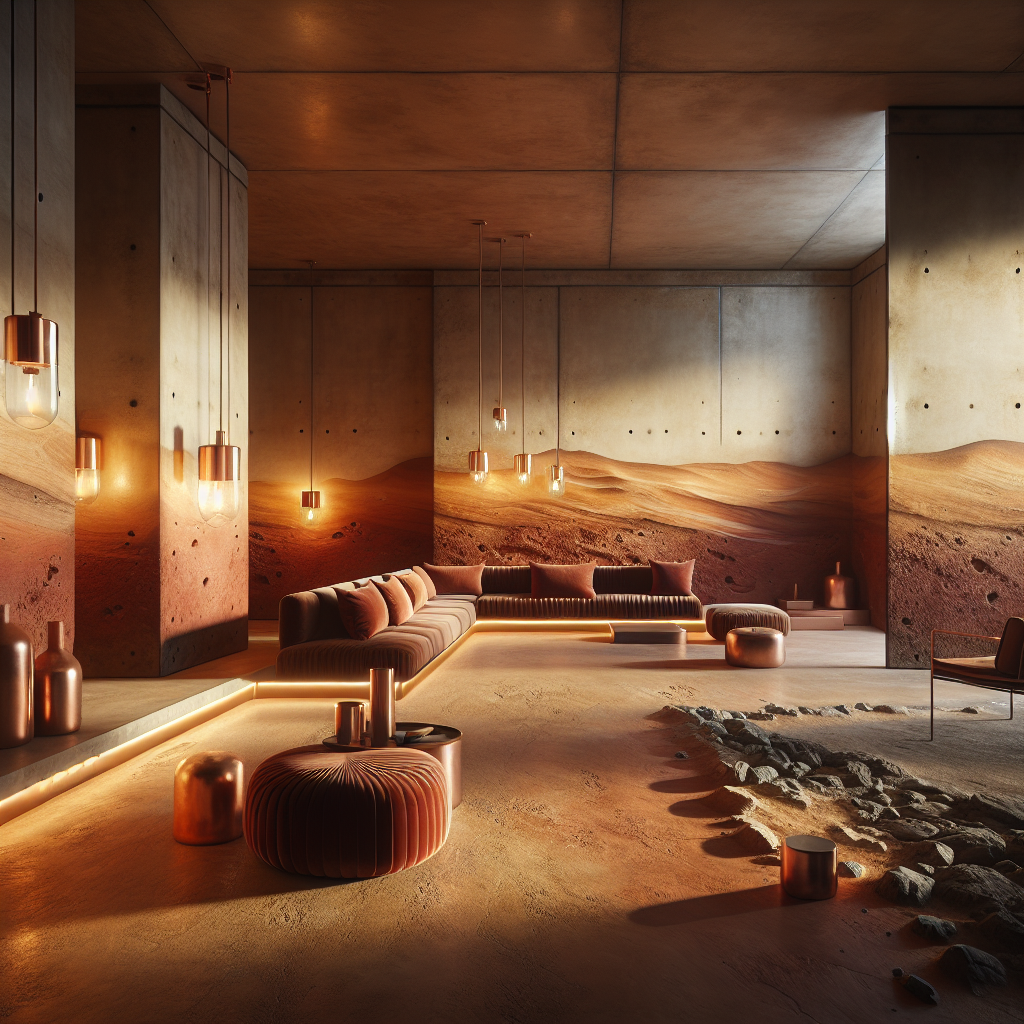
A Splash of Mars: Red-Hued Interiors Inspired by Extraterrestrial Landscapes
The color red has always carried a gravitational pull—an emotional resonance that spans from the primal to the poetic. In 2025, this magnetism takes on a new dimension as interior designers and architects turn their gaze skyward, channeling the raw, rust-toned majesty of Mars into earthly interiors. This emerging trend—Mars red-hued interiors—is not merely aesthetic indulgence; it’s a design philosophy that merges speculative futurism with grounded materiality, evoking the textures, hues, and psychological intensity of extraterrestrial terrains.
The Allure of the Red Planet
Mars has long fascinated architects and designers as both a metaphor and a muse. Its ochre plains, oxidized dust, and shadowed craters conjure a palette that feels simultaneously ancient and futuristic. According to NASA’s imagery of the Martian surface, the planet’s dominant tones range from burnt sienna to deep terracotta—colors that communicate endurance, isolation, and quiet strength. Translating these into interiors creates spaces that feel elemental yet refined, primal yet sophisticated.
This chromatic fascination aligns with a broader cultural momentum toward space architecture and speculative design. As humanity contemplates off-world living, designers are interpreting the aesthetic and psychological implications of extraterrestrial environments. The result: interiors that feel like terrestrial testbeds for cosmic imagination.
From Martian Dust to Domestic Warmth
The Mars-inspired palette extends beyond a single shade of red. It’s a spectrum of mineral tones—iron oxide, copper clay, ochre, and muted coral—that can be layered to create depth and warmth. When paired with tactile materials such as rammed earth, clay plaster, or oxidized metal, these hues evoke the sensation of inhabiting a sculpted landscape rather than a constructed room.
Designers like Patricia Urquiola and Vincent Van Duysen have recently embraced this tonal direction, integrating rustic reds and sandy neutrals into their latest collections. In hospitality spaces, these tones manifest as enveloping cocoons of warmth, offset by the cool precision of glass or polished concrete. In residential interiors, they offer a counterpoint to the sterile minimalism that dominated the last decade—reintroducing emotion, texture, and narrative.
Material Alchemy: Earth Meets Space
The rise of Mars red interiors coincides with renewed interest in ancient desert architecture, where color and material are inseparable. Earth-based pigments, clay composites, and natural oxides are being reimagined through contemporary fabrication methods such as 3D printing and digital texturing. The result is a dialogue between the archaic and the avant-garde.
For instance, in a recent concept by the Dubai-based studio Roar, walls are coated with micro-layered clay plaster that shifts tone under changing light—mimicking the way Martian dust refracts sunlight. Similarly, London’s Studio Furthermore has developed ceramic furniture glazed with iron-rich pigments that oxidize over time, allowing surfaces to “age” like planetary crusts. These innovations blur the boundary between geological process and human craftsmanship.
Lighting the Martian Mood
Lighting plays a pivotal role in the success of Mars-inspired interiors. The red spectrum absorbs light differently than cooler tones, demanding careful calibration of illumination. Designers are turning to warm color temperatures—between 2200K and 2700K—to accentuate the depth of terracotta walls and rusted metal finishes. Diffused amber lighting, recessed LED strips, and sculptural pendants with copper interiors enhance the perception of warmth while maintaining visual clarity.
Some projects experiment with dynamic lighting systems that shift hue throughout the day, echoing the slow chromatic transitions of Martian sunsets. This sensory choreography aligns with the principles of biophilic design, grounding the inhabitant in a rhythm that feels both cosmic and natural.
Psychology of the Red Spectrum
Red is often associated with energy, passion, and vitality, but in its deeper, earthen variations, it also conveys security and introspection. According to research in color psychology, warm red-brown tones can reduce stress and foster a sense of belonging. This makes Mars-inspired interiors particularly suited for meditative or communal spaces—lounges, reading rooms, and creative studios where emotional resonance is as important as functionality.
The psychological depth of these interiors lies in their ambiguity: they feel both ancient and futuristic, both grounded and speculative. In a world increasingly dominated by digital surfaces and virtual experiences, the tactile richness of Mars red interiors offers a counterbalance—a return to the elemental.
Case Studies: Earthly Interpretations of Extraterrestrial Design
One striking example is the “Red Habitat” installation at Milan Design Week 2024, where Italian designer Cristina Celestino transformed a gallery into a Martian domestic landscape. Walls of velvety clay plaster, low-slung seating in oxblood velvet, and sculptural lighting resembling meteor fragments created an immersive environment that blurred the line between home and habitat.
Similarly, the boutique hotel “Sol 12” in the Atacama Desert, Chile, embraces Mars-inspired design not as novelty but as context. Its interiors, designed by Santiago-based firm Elemental, feature rammed-earth walls, rusted steel accents, and skylights that frame the ochre desert beyond. The result is a dialogue between planetary aesthetics and local geology—a grounded expression of cosmic aspiration.
These projects echo the speculative yet tangible spirit of works like those discussed in sand-printing technology for design and architecture, where material experimentation and planetary imagination converge.
Redefining Sustainability Through Martian Minimalism
The Mars aesthetic also intersects with sustainability. Its reliance on mineral pigments, natural clays, and recycled metals aligns with the principles of circular design. The muted, enduring palette resists trend fatigue, promoting longevity over disposability. Moreover, the tactile honesty of these materials reflects a broader shift toward authenticity in design—spaces that wear their imperfections proudly, much like the scarred surface of Mars itself.
In this sense, Mars red interiors are not about escapism but about reconnection. They remind us that the future of design lies not in sterile perfection but in embracing the raw, the imperfect, and the elemental.
Crafting the Future: From Speculative Fiction to Spatial Reality
As architects and designers continue to explore extraterrestrial aesthetics, Mars red emerges as a chromatic bridge between science fiction and spatial reality. It evokes the cinematic atmospheres of speculative worlds—think of the dystopian glow of Blade Runner 2049’s futuristic cityscapes—while grounding them in tactile, human-centered design.
The trend’s endurance will depend on its adaptability. When used sparingly, Mars red can serve as a bold accent—an ochre wall, a rusted metal screen, a terracotta floor tile. When applied holistically, it transforms entire environments into immersive experiences that feel both alien and intimate. The key lies in balance: pairing the warmth of red with neutral stone, pale wood, or matte black to maintain visual harmony.
The New Frontier of Color
In the broader chromatic landscape of contemporary design, Mars red stands as a symbol of resilience and imagination. It captures the zeitgeist of an era that looks beyond Earth for inspiration yet remains deeply rooted in material authenticity. As we continue to explore new worlds—both real and imagined—this hue reminds us that design’s greatest power lies in its ability to make the unfamiliar feel like home.
From the oxidized dust of distant planets to the polished surfaces of urban interiors, the journey of Mars red is a testament to design’s evolving dialogue with the cosmos. It’s not just a color—it’s a state of mind, a narrative of endurance, and a vision of what it means to inhabit the future.
Keywords: Mars red interiors, extraterrestrial design, terracotta interiors, space-inspired architecture, red color psychology, sustainable materials, Martian aesthetic, circular design, futuristic interiors.
